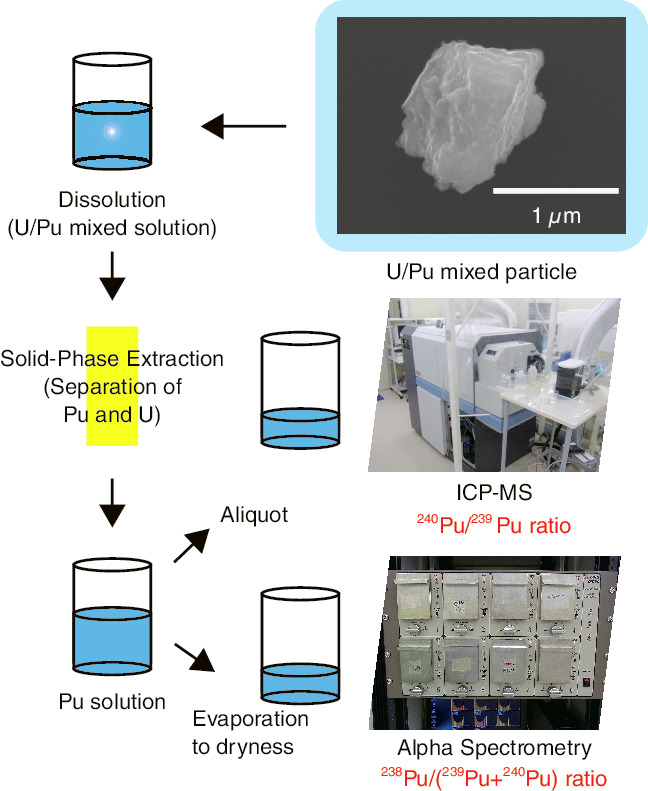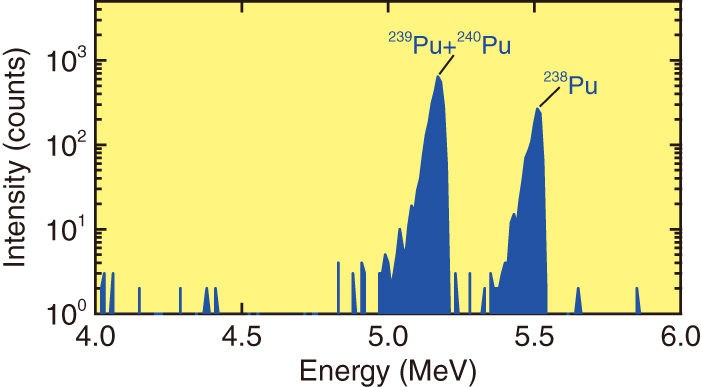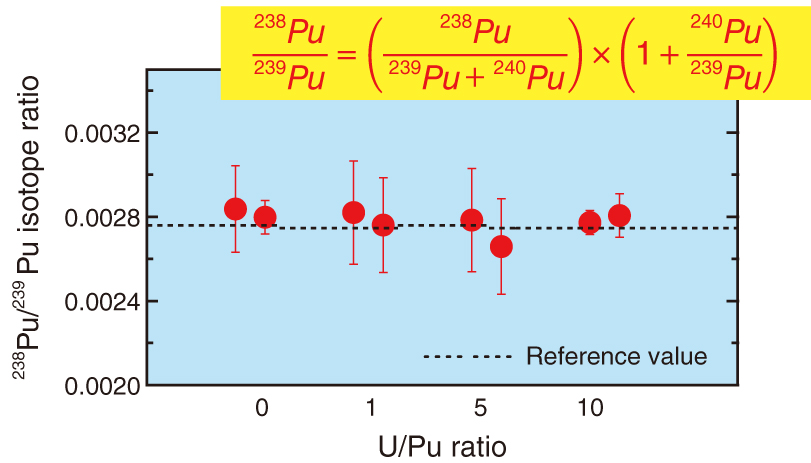
Fig.2-15 Analytical flow of Pu analysis for individual U/Pu mixed particles

Fig.2-16 Alpha spectrum of a U/Pu mixed particle with a U/Pu ratio of 5 measured for 2000000 s

Fig.2-17 The 238Pu/239Pu isotope ratios measured for individual U/Pu mixed particles with U/Pu ratios of 0, 1, 5, and 10
Plutonium (Pu) is a key element for nuclear-fuel cycles; it is produced by neutron capture by uranium (U) in nuclear reactors and is used as U/Pu mixed-oxide (MOX) fuel after purification. On the contrary, Pu with high 239Pu abundances plays an important role in the production of nuclear weapons. Therefore, undeclared nuclear activities using Pu and U should be checked and prevented. We measure U- and Pu-isotope ratios in environmental samples taken at nuclear facilities from around the world to unveil undeclared nuclear activities in cooperation with the International Atomic Energy Agency (IAEA).
The main isotopes of Pu are 238Pu, 239Pu, 240Pu, 241Pu, and 242Pu. Although mass spectrometry is commonly used for isotope-ratio analysis, the determination of 238Pu/239Pu-isotope ratios in individual U/Pu mixed particles is impossible because the mass of 238Pu is almost the same as that of 238U. Therefore, there are no analytical techniques for measuring 238Pu/239Pu-isotope ratios in such particles. In the present study, we developed a novel technique using alpha spectrometry and inductively coupled plasma-mass spectrometry (ICP-MS) to determine Pu-isotope ratios including 238Pu/239Pu.
The analytical procedure developed in this study is shown in Fig.2-15. Each U/Pu particle was isolated using a glass needle under a scanning electron microscope and dissolved with acids. Pu in the sample solution was separated from U by solid-phase extraction. The 240Pu/239Pu, 241Pu/239Pu, and 242Pu/239Pu-isotope ratios and the 238Pu/(239Pu+240Pu) activity ratios in the Pu solution were determined with ICP-MS and alpha spectrometry, respectively. Finally, the 238Pu/239Pu-isotope ratios in each particle were calculated from the 240Pu/239Pu and 238Pu/(239Pu+240Pu) ratios.
Fig.2-16 shows an alpha spectrum of Pu extracted from a U/Pu mixed particle with a U/Pu ratio of 5. Since well-separated peaks were obtained in this spectrum, the 238Pu/(239Pu+240Pu)-activity ratio could be determined accurately. In addition, the 240Pu/239Pu, 241Pu/239Pu, and 242Pu/239Pu isotope ratios were successfully determined with ICP-MS. Fig.2-17 shows the 238Pu/239Pu isotope ratios in individual U/Pu mixed particles with the U/Pu ratios of 0, 1, 5, and 10. These values calculated from the 240Pu/239Pu isotope ratios and the 238Pu/(239Pu+240Pu) activity ratios were well consistent with reference values. These results indicate that the proposed method using alpha spectrometry and ICP-MS enables us to determine Pu-isotope ratios accurately for individual U/Pu mixed particles.
The present study was sponsored by the Secretariat of the Nuclear Regulation Authority (NRA), Japan.